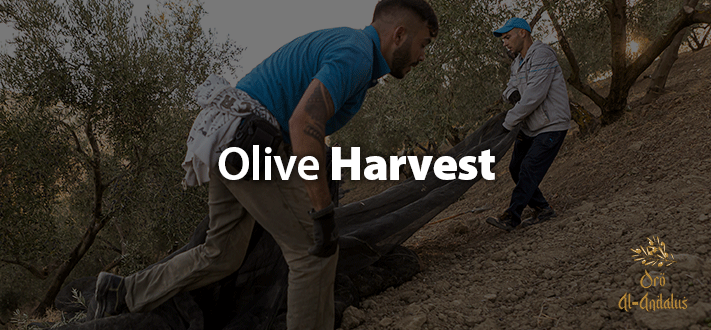Now that winter is beginning, it’s time for the olive harvest. This agricultural activity takes place at this time because the olives have reached their level of maturity and must be extracted from the olive tree for further processing.
Here are some aspects to consider about olive harvesting:
• Harvest Time:
As mentioned earlier, olive harvesting usually begins in late autumn when the olives have reached maturity. The exact timing may vary depending on the region and climate, but November is typically a key month.

• Olive Maturity:
Determining maturity is done by visually observing the color of the olives. For a more thorough assessment, chemical and sampling tests will be conducted.
The optimal harvest time varies depending on the type of olive and the desired product. Olives destined for oil production are harvested when they are ripe but not overripe.
Conversely, table olives can be picked at different stages of maturity.
It is essential to carefully assess maturity to ensure the quality of the final product.
• Harvesting Methods:
There are different methods for harvesting olives.
Traditional methods include manual harvesting, where workers use nets or tarps to collect fallen olives.
Vibrating machines are also used to shake the trees, causing the olives to fall onto nets.
The choice of harvesting technique can affect the quality of the olives and the resulting oil. Manual harvesting is more selective and avoids damaging the olives but can be laborious and costly.
On the other hand, vibrating machines are more efficient in terms of time and cost but can damage trees or olives if not used properly.

• Types of Olives:
There are different varieties of olives, and each may have a slightly different optimal harvest time.
Black olives are usually riper than green ones, and some varieties are harvested for oil production, while others are destined for table olives.
• Weather Conditions:
Weather conditions can influence the quality of olives and oil. Harvesting under dry conditions is preferable to avoid fermentation issues and quality deterioration. Rain just before or during harvesting can increase moisture and negatively affect oil yield.

• Selection and Grading:
During harvesting, olives should be selected and graded according to their maturity and quality. This is especially important if they are destined for table olive production.
• Equipment Quality:
If machines are used for harvesting, it is crucial that they are in good condition and used properly. Poorly maintained machines can damage both olives and trees.
• Soil Care:
Harvesting can be a process that affects the soil around the trees. It is important to minimize soil compaction and avoid damaging tree roots during harvesting to maintain overall orchard health.
• Extraction Process:
After harvesting, olives are transported to the mill, where oil is extracted. This process involves cleaning and crushing the olives, followed by pressing to extract the oil. Then, the oil is separated from water and other residues.

By paying attention to these aspects, producers can improve the quality of the resulting olive oil. Olive harvesting is a rooted and meticulous tradition as it is considered one of the main factors for proper management at each stage of the process.
For more information, contact us at +34 690 613 790 or visit our website. You can also follow us on social media to stay updated. We’re on Instagram and Facebook. See you soon!

